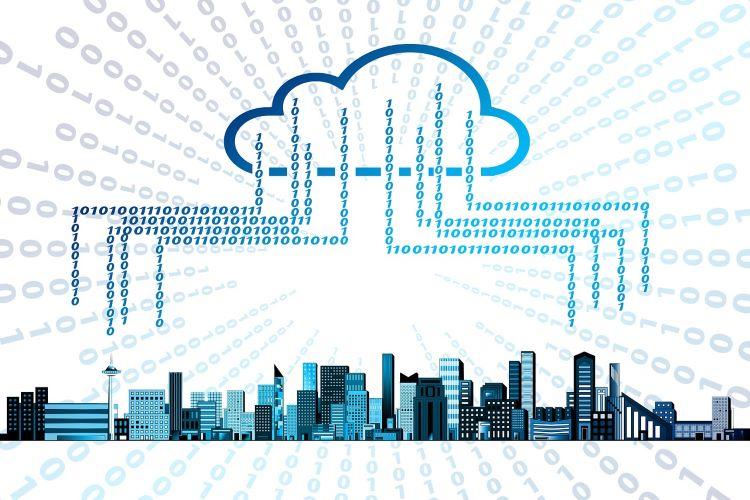
Cloud is finding remarkable success with businesses across industries. Cloud is making it simple to adopt digital and is also accelerating adoption. A slew of trends such as streaming, work from anywhere, the reliance on edge sensors, the quest for carbon neutrality, the pursuit of planet-scale applications, and new IT models have placed the cloud at the center of action in 2021. Today, there can be no business strategy without a cloud strategy. IDC predicts that spending on cloud services, hardware, and software will surpass $1.3 trillion by 2025 at a compound annual growth rate of 16.9%.
To harness the power of the cloud in 2022, businesses need to stay on top of 10 key cloud practices:
Rearchitecting: The number of businesses rearchitecting on-premise applications for the cloud with the objective of increasing customization and scalability will continue to grow. To do this, they will leverage modern and dynamic public, private, and hybrid cloud services, unlocking maximum agility, resilience, and business impact.
Going Serverless: Practically every cloud service provider is offering serverless models to solve teething troubles like speed, cost control, and server management. With the serverless architecture, developers get to encapsulate their code and, when triggered, cloud service providers execute it automatically. Developers can deploy and scale services rapidly, without having to provision or manage more servers. Moreover, the pay-as-you-go model means businesses pay only for what is needed.
Edge-Public Cloud-Hybrid Cloud Computing: Cloud and edge computing are merging. As Gartner suggests, by 2024, most cloud service platforms will facilitate “at least a few distributed cloud services that execute at the point of need.” We've already begun to see experimentation in this area – for example, edge computing talking to public cloud or edge computing paired with a hybrid cloud. The focus has been to bring data storage, processing, and analytics closer to the end user for better privacy, security, speed, and efficiency. Plus, this mix of interactions between edge computing, public cloud, and hybrid cloud will improve user experience.
Security Focus: In India, 86.63 million users' data was breached as 2021 began to come to an end. India alone showed a 351.6% increase in affected accounts compared to 2020. Going by the data, in theory, it could take only five years to expose the entire internet population. Hence, as cloud adoption grows, cloud security will be a major concern. Without having the fundamentals of cloud security covered, we would be exposing infrastructure to vulnerabilities. Just like cloud-first, it is time to start thinking about a security-first approach. Unfortunately, no tool can fix the vulnerabilities, unless an organizational culture of security is nurtured. Security validations need not only to shift left into the DevSecOps pipelines but should also move rightwards, into business, operations, and engineering. Organizations need to be extra careful as cloud security is a tricky task: Even the most experienced engineers tend to carry their poor on-premise security practices to the cloud.
Data Growth and Analytics: As the volume of data being generated continues to grow, there is more work to be done with data integration, analytical models, and data architecture modernization. Expect Machine Learning (ML) to take the driver’s seat. With the cloud taking away hefty investments in data warehouse devices, more businesses will embrace analytics. Analytics combined with AI/ML for disruptive business decision-making is an associate trend to keep on your radar in 2022.
Cloud FinOps – Cost Optimization: Cloud spending can quickly go out of hand. Gartner says that organizations can end up overspending by 70% without deriving expected value. Bringing visibility to cloud spending will allow businesses to manage usage patterns, eliminate underutilized services and reduce oversized infrastructure. Control and optimization of the cloud will supplement the cost optimization enabled by options like serverless architecture.
AIOps is the Cybersecurity Realm: Automation of cybersecurity through AIOps is going to be big on the IT agenda. AIOps uses intelligent algorithms to model systems behavior and set baselines for performance. Automated security has the potential to proactively detect a cyberattack in real-time by identifying deviations. In the event of an attack, the system can automatically kick off defensive tactics like shutting down a server, closing access to a storage system, or blocking an IP address.
Multi-Cloud Strategy: Public cloud services in India, says Gartner, will grow to a market size of $7.3 billion in 2022, an increase of 29.6% from 2021. Multi-cloud environments—which are a combination of public, private, and hybrid—will enable organizations to reap the benefit of each platform and considerably reduce downtime, control costs, optimize performance, and meet business goals faster by leveraging optimal cloud solution combinations.
IoT and Cloud: The Internet of Things (IoT) and cloud computing combined will be one of the most notable trends to watch out for. IDC forecasts that IoT devices will cross 80 billion by 2025. IoT cloud platforms will help connect these devices to applications, creating a comprehensive cloud ecosystem. These Platforms-as-a-Service (PaaS) solutions will provide support to build applications and services using the built-in IoT features. Almost every cloud service has started providing these offerings.
Containers: Containers-as-a-Service (CaaS) is finding notable traction. Containers consist of software components and their dependencies bundled together so that they can run on any host system. CaaS is a cloud-based service that enables software developers to rapidly launch and scale containerized applications. Gartner predicts that by 2022 more than 75% of global organizations will be running containerized applications in productions.
Developments in the cloud are moving fast, adding to the appeal of the technology. It is easy to get distracted by these developments. By staying focused on key practices, businesses can derive maxim
The author is India Head of DevSecOps and Cloud Engineering Practice, Altimetrik

 In
In
Add new comment